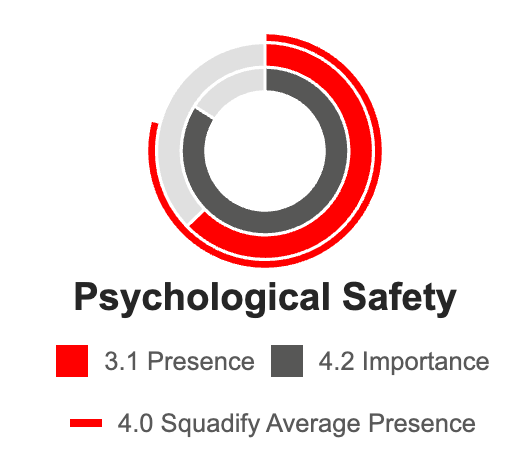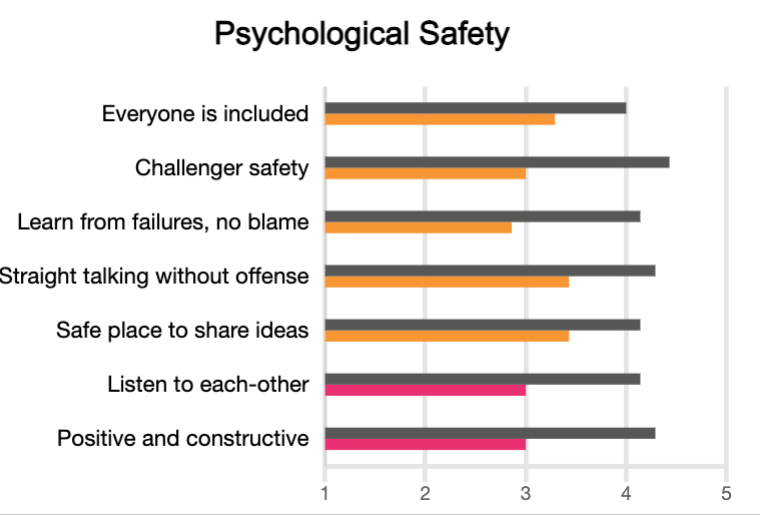Psychosocial hazards in the workplace: addressing challenges using a data-driven approach to teams

The mental health and well-being of employees are crucial for obvious reasons. We are mostly compassionate beings that want the best for others including in the workplace. It’s also well-known now that these are also factors in the financial health of our organisations. So it’s important and we all want it. So why is there a mental health crisis in our organisations.
One of the answers is that our best efforts can be undone by psychosocial hazards — those aspects of work design, management, and organization that pose risks to psychological health. Understanding these hazards, mitigating their effects, and enhancing team performance are essential for organisations aiming to thrive in the modern economy. This article explores the nature of psychosocial hazards, strategies to mitigate these risks, and how Squadify, a team development platform, can play a pivotal role in overcoming these challenges to bring well-being to individuals, teams and organisations.
Understanding Psychosocial Hazards
Psychosocial hazards encompass a variety of issues including, but not limited to, workplace stress, harassment, bullying, lack of role clarity, poor organizational change management, and unsafe working conditions that can lead to psychological or physical harm. The consequences of these hazards are profound, affecting absenteeism, turnover rates, and medical costs, as well as diminishing overall team performance and productivity.
Common Psychosocial Hazards include:
- Stress: Often caused by high workloads, tight deadlines, and conflicting demands or priorities.
- Bullying and Harassment: These behaviors create a hostile work environment and can lead to severe psychological trauma.
- Poor Team Dynamics: Lack of support or poor communication within a team can lead to a decrease in job satisfaction and effectiveness.
- Unclear Job Roles: Without clear expectations and objectives, employees may feel unsure about their responsibilities, contributing to stress and decreased performance.
Mitigating Psychosocial Hazards
Squadify urges organisations to take a fresh and science-driven approach to mitigating psychosocial hazards. Bland, organisation-wide initiatives can miss the point and be a waste of precious resources so here’s a five-step plan
- Focus on teams, not organisations: Amy Edmondson, the pioneer of the science of psychological safety, is clear on this: psychological safety exists at the team level, not the organisational level. Rather than starting at the top and hoping that it impacts teams, organisational initiatives should be ‘team up’.
- Start with the confidential view of employees: tools such as Squadify provide a way to hear the views of every team member in complete confidence. This is a first step toward mitigating psychosocial hazards: ensuring that people feel – and are – heard.
- Pinpoint problem areas: use the data to identify, by team, where the biggest issues are. Squadify splits Psychological Safety into seven elements (from inclusion to the ability to challenge the status quo) and also tracks other indicators such as role clarity and resources that can represent psychosocial hazards if they are not meeting the needs. Averages can hide the truth so another key output is the ‘range’ of responses: this often alerts leaders to issues, for example if there is a wide spread in ‘being able to speak straight’ or ‘share ideas’, it can indicate that safety is not felt uniformly across the team – this is an issue.


Squadify measures seven elements of Psychological Safety in order to pinpoint where to take action.
- Take action, track action: team leaders must take firm action to close gaps identified by the data. Bu there is a twist here too. If psychosocial hazards are identified, a team discussion is unlikely to the best forum to gain deeper understanding of it. Team leader 1:1s hold the same risks – very often it’s the team leader’s behaviours that – inadvertently – lead to psychosocial risks. A third party or a trusted member of the team may need to talk to team members individually. This is a good reason for each team to have access to a coach.
- Repeat, often: teams – and psychosocial hazards – are highly dynamic so frequently checking in with the team is essential. A good yardstick for ‘how often’ is to think how much time you need to implement and embed the learnings from each round of data insights
Conclusion
Psychosocial hazards have always posed significant risks to employee well-being and organizational performance. With the new laws in Australia, and potentially other parts of the world, these hazards also now present governance and legal risks. Addressing these psychosocial hazards requires a strategic approach focused on enhancing workplace culture, clarifying roles and expectations, and supporting team dynamics.
A data-driven approach to psychological safety in teams has multiple advantages over more generic organisational methods. Confidential data input means that everyone is heard; the insights target the areas in the organisation where risks exist; and the remedial activities are less costly as they are targeted where they are needed.
The result is happier, more productive organisations. In a world where engagement and profits are under pressure, mitigating psychosocial hazards should be a priority for every CXO.

.svg)